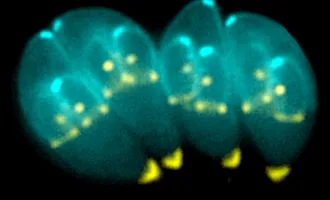Only A Mother's Immunity
Scientists are making discoveries that give hope to global improvements in healthy pregnancies.
The immune system is naturally primed to prevent invaders from thriving in the human body. Pregnancy presents an interesting challenge where immunity must balance defense and fetal tolerance — the fetus is foreign but must thrive.
A mother reconfigures her own own defense system, constantly, as the fetus grows and changes.
Several pregnancy-related complications are linked to problems in this balancing act. The rate of miscarriage ranges from 10% to 20%, and 11.5% of babies that make it are born preterm — evidence that maintaining an optimal environment for healthy mother and child is extremely difficult.
Mapping the precise adaptations of maternal immunity throughout pregnancy can, in theory, allow for risk prediction and therapeutic correction.
Researcher Nima Aghaeepour, in Dr. Brice Gaudilliere’s lab at Stanford University, applied new technology and computational platforms to construct an immune clock of human pregnancy.
Blood samples were collected from 28 women during early, mid, and late stage pregnancy, and six weeks after delivery.
These samples allowed researchers to assess immunity by measuring immune cells types moving through the body and their functional state (active, suppressive, resting, etc.).
For each sample, half was labeled with protein markers that convey immune cell abundance and resting signaling state. The second half was exposed to factors that mimic infection to induce an active immune response.
It’s like determining how many singers are in a bar, finding out what type of music each one sings, and then playing music to see if any will sing for you.
This study couldn’t be done without mass cytometry, which can measure up to 40 different characteristics in a single cell. You can determine whether a specific protein is present and how much there is.
Researchers typically analyze 1 million cells per sample using this technique, meaning Aghaeepour and colleagues collected an impressive 4.48 billion data points.
The three broad immune features described — cell abundance, basal signaling, and response to stimulus — were correlated using a modified regression method that takes high dimensional data and displays it into smaller dimensions we can interpret.
This study revealed a number of cellular programs that are precisely timed over pregnancy. For example, neutrophils expand and become hypersensitive during pregnancy, an immune cell type important for initial inflammatory response to pathogen or injury.
They also found increases in immune signals that promote the development of regulatory T cells (specifically circulating IL-2 causing STAT5ab activity in T cells). Regulatory T cells dampen adaptive immunity, which is likely critical to maintain fetal tolerance.
Importantly, this study resulted in a detailed signature of healthy maternal immunity. Strong deviations from this signature in future pregnancies may predict pregnancy-related complications, and reveal specific therapeutic targets to improve fetal-maternal heath.
For more detailed information, read the original study in Science Immunology, “An immune clock of human pregnancy,” published Sept. 2017.



